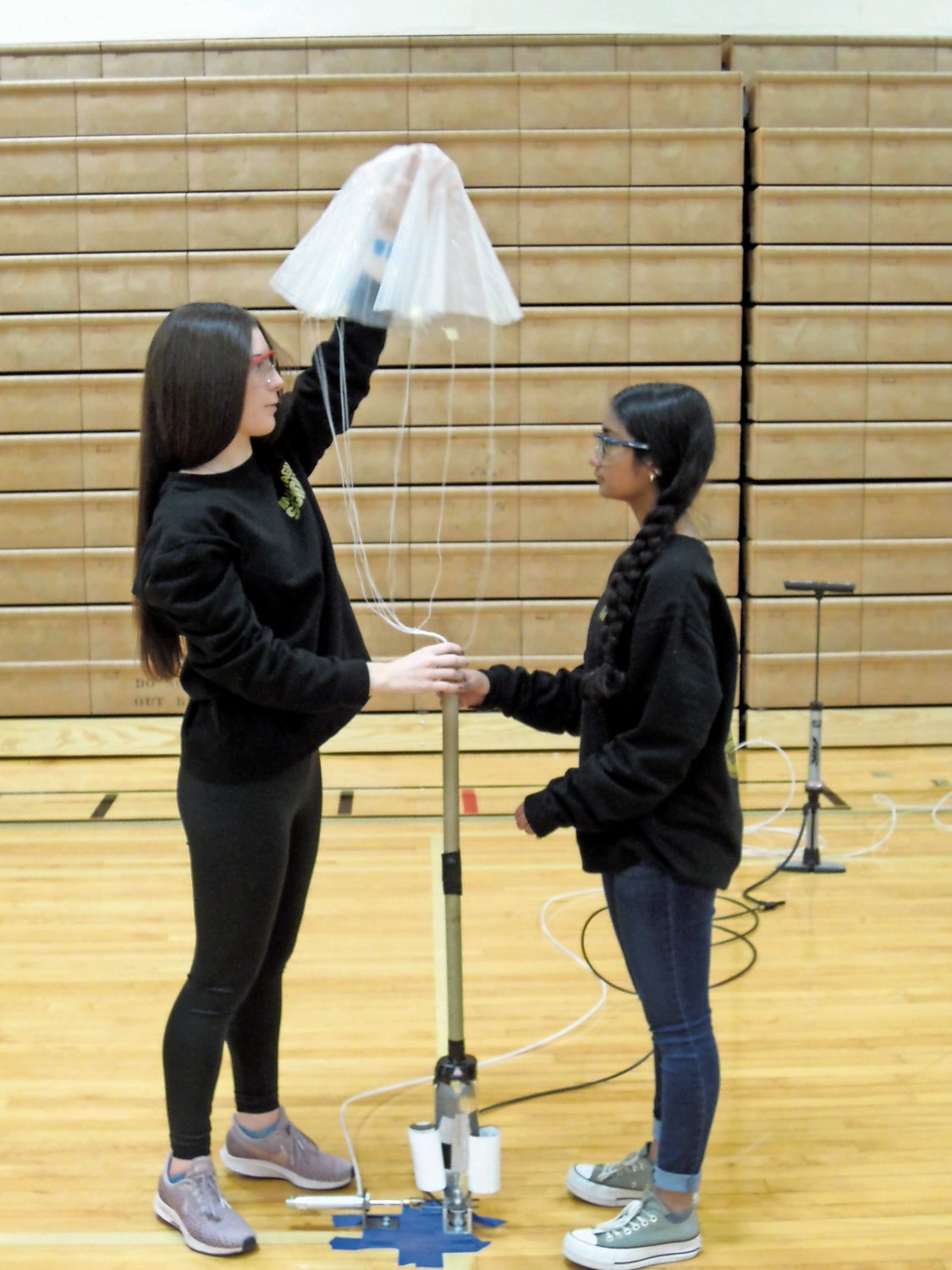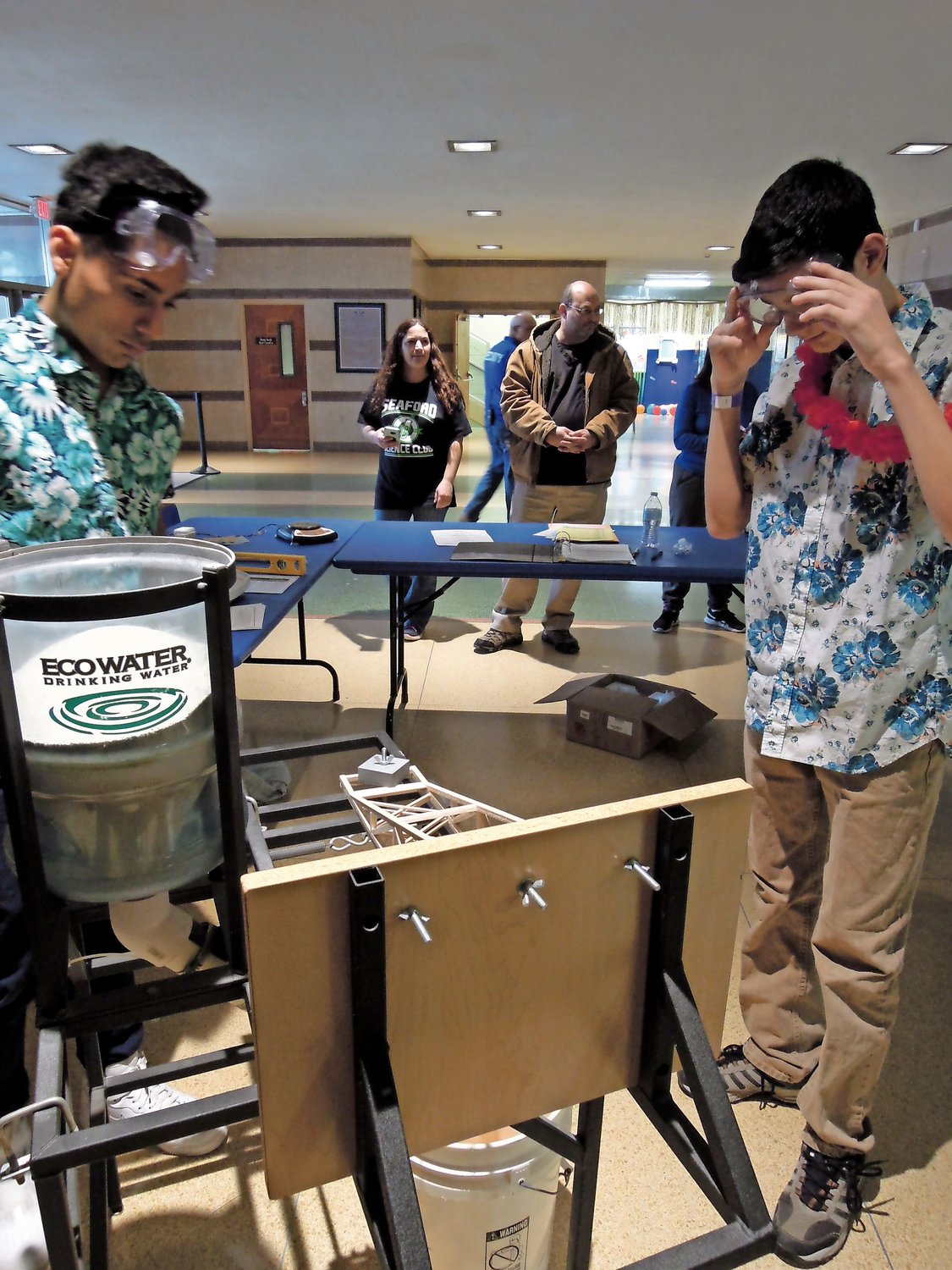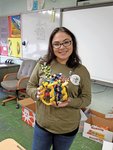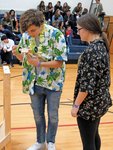Wantagh H.S. scores big in Olympiad
Anyone who thinks science is a quiet activity reserved for the ivy-covered halls of academe has never attended a science Olympiad like the one held at Levittown’s Division Avenue High School last Saturday. Award-winning students high-fived, shouted and jumped on one another like sports stars winning a championship.
More than 630 students on 42 teams competed from high schools all across southeastern Nassau County’s Division C, according to Levittown Schools Science Director Dr. Leigh Rust, including Seaford, Wantagh, Bellmore, East Meadow and Merrick. The schools were vying for the right to represent the region at a statewide competition in Syracuse in March.
Wantagh’s A team finished third, Bellmore John F. Kennedy’s A team, seventh, and MacArthur High School’s A team, 10th. The top seven schools will go to the state finals.
Syosset High School, a perennial science powerhouse, topped the overall standings, followed by Hicksville High.
Wantagh’s two teams took home 21 medals overall, including two first-place awards and four for second place. Seaford, which sent a single small team, was blanked in this year’s competition.
A similar Olympiad for the division’s middle schools will be held at Wisdom Lane Middle School in March.
The Olympiad is divided into a series of practical events, such as “boomilevers,” gravity vehicles and designer proteins, which require competitors to build devices or models that are evaluated by judges. Other teams take written exams on subjects as diverse as astronomy, geology mapping and music. Some of the 22 events, like protein modeling and detector building, have both practical and written components.
The level of sophistication is astonishing. In protein modeling, for example, students had to read a scientific article and translate schematics from a color-coded card and a computer file into a three-dimensional model of a protein. The exercise was intended to help them understand an approach to gene editing called CRISPR, or Clustered Regularly Interspaced Short Palindromic Repeats, according to Kennedy science teacher and team coach Alexis Vandergoot.
“This can help us understand viruses,” Vandergoot explained — particularly timely in the face of the coronavirus that has spread from China across the globe. CRISPR can help epidemiologists develop vaccines at a much faster rate than was possible before the evolution of such DNA-editing tools, she said.
In Circuit Lab, in which Wantagh’s A team placed second — an event overseen by Wantagh coach Richard Colavita — students take an hour-long exam in addition to analyzing and constructing a circuit from a schematic.
In detector building, won by the Wantagh A team of Margaret Goles and Joey Strab, contestants built a temperature-sensing device like a thermometer using a microprocessor or microcircuit and LED display to determine the warmth of water. It sounded simple, but watching contestants build and test their devices underscored how even the simplest concepts required complex calculations and manufacturing processes.
In the other event won by Wantagh, Write It Do It, students had 25 minutes to describe a given object. Then they built the objects according to their own specifications. They could use numbers in their descriptions, but no drawings or charts. The winners were those who came closest to matching their structures to their descriptions.
The teams experienced disappointments, too. In one heartbreaker, MacArthur High School’s boomilever — a frame that was supposed to support a bucket of sand — fell at the start due to in an insufficiently reinforced base.
And MacArthur’s gravity vehicle team of Julia Gizzo and Ryan Senra was disappointed with its performance as well. “It veered right in practice,” Senra said of the vehicle, which had a streamlined plastic body and drive wheels whose tension could be adjusted. The vehicles were released on an incline and had to travel a specific course and distance. Deviations added penalty points. “So we adjusted it, but it ended up veering too far to the left.”
In all the measuring and calculating, one thing that did not get counted was calories. The students were not alone in their successes: It was a very good day for local pizzerias.














